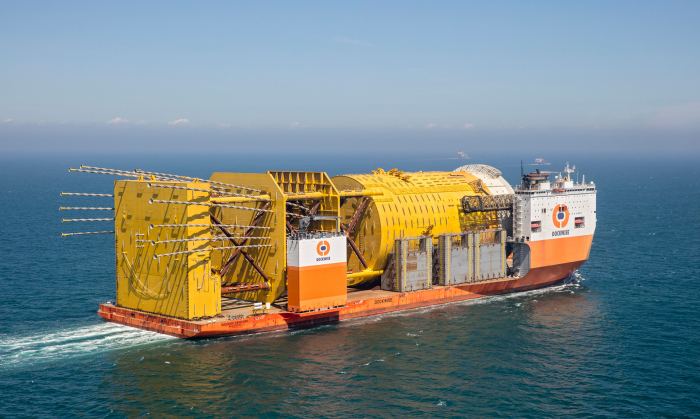The Dutch are world renowned for their water management capabilities, which span hundreds of years. As the world feels the impact of global warming with more extreme weather patterns and rising sea levels, Boskalis is continuing the work of its forefathers in protecting vulnerable delta areas around the world. In this article just three of the innovative coastal and inland flood protection projects are presented in more detail.
Preparation is vital — the Dutch know this more than anyone. They have been protecting themselves against the dangers of rising sea levels for hundreds of years. Inventive coastal protection measures are just as relevant today. Three different examples are presented in more detail: a unique large-scale beach replenishment, dike upgrades and an inland flood channel.
Sand Motor: a source of inspiration
It is more than five years since Boskalis was involved in a unique pilot project to create the ‘Sand Motor’, a peninsula measuring one by two kilometers made from 20 million cubic meters of sand. The Sand Motor has quickly become an iconic example of ‘Building with Nature’. The first results have exceeded expectations and were presented at an international conference.
Boskalis’ in-house engineering department Hydronamic has been closely involved in the development and construction of the Sand Motor. Arjan van der Weck and Jaap van Thiel de Vries, the Boskalis Hydronamic Manager and Deputy Manager, highlight this special project and outline how the Sand Motor has already become a source of inspiration.
The Sand Motor has quickly become an iconic example of Building with Nature
“The Sand Motor was set up to learn about how we can use the functions of the coastal system. The central issue is whether beach replenishment can be made more sustainable and effective by depositing a large amount of sand in a single operation that is spread along the coast naturally in the years thereafter. A completely new approach in coastal management,” Jaap says proudly.
Arjan adds: “Before the trial began, the Sand Motor was expected to last for 20 years. It was thought that the sand would be spread along the Delfland coast, between the Hook of Holland and Scheveningen in the Netherlands during that period but the lifetime of the Sand Motor is now expected to be a lot longer. At the moment, the Sand Motor is delivering sand to a stretch of more than five kilometers of coastline. In the first five years, almost 1 million cubic meters of sand have been moved to the south and about 1.5 million cubic meters have moved northwards.”
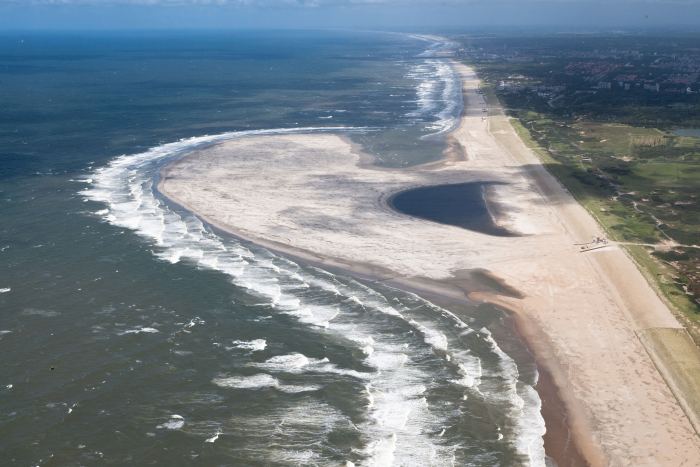
Aerial view of the Sand Motor
“As far as the ecological impact of the Sand Motor is concerned, the experiment is actually only starting now,” Jaap explains. “The first tentative conclusions indicate a rise in the number of plant species and the amount of places where low-growing vegetation is found. Numerous species of bed-dwelling organisms (benthos) have been observed in the soil in the first five years, in addition to dozens of bird species.”
“In recent years, we have seen a lot of interest in this approach from the international hydraulic engineering community,” explains Arjan. “The Sand Motor has been visited by delegations from a whole range of countries, including Sweden, Jamaica, Peru, Togo and Benin. There are now concrete plans for a Sand Motor near Norfolk in the United Kingdom.”
Inspiration for the Mud Motor
The Sand Motor is also a source of inspiration for other applications. Jaap points to the Hondsbossche and Pettemer Sea Defense, where Boskalis and a partner replaced one of the last sections of ‘hard’ coastal defenses in the Netherlands with a dune system and foreshore replenishment. “That’s a project that clearly drew on the knowledge and experience acquired with the Sand Motor to make the safest and most accurate possible design,” says Jaap.
Arjan adds: “In a sense, the Sand Motor put us on the track for a new, indirect approach to replenishment in which the water takes the sediment where it is needed. By playing about with the location of a replenishment operation and using silt as well as sand, we can feed different places in a coastal system with sediment in a natural way.”
Using the Sand Motor principle EcoShape, (a foundation that carries out the public-private Building with Nature innovation program) has now launched a pilot project in Harlingen in the north of the Netherlands to look at the possibilities of a ‘Mud Motor’. Silt is being taken out of the port and deposited in the tidal channel so that the flood tide will transport it to salt marshes nearby, raising the level of the marshes in line with the sealevel rise.
Dike upgrade projects
In addition to beach replenishment projects, Boskalis is carrying out a number of different dike upgrade projects to protect coastal areas.
On the Wadden Sea island of Texel in the Netherlands, Boskalis is executing a wide-ranging project where activities include raising existing dikes with clay and rock, moving and partially replacing dike sections, building foreshore defenses, replacing three pumping stations, building small civil engineering structures, and a survey to locate unexploded ordnance from the Second World War.
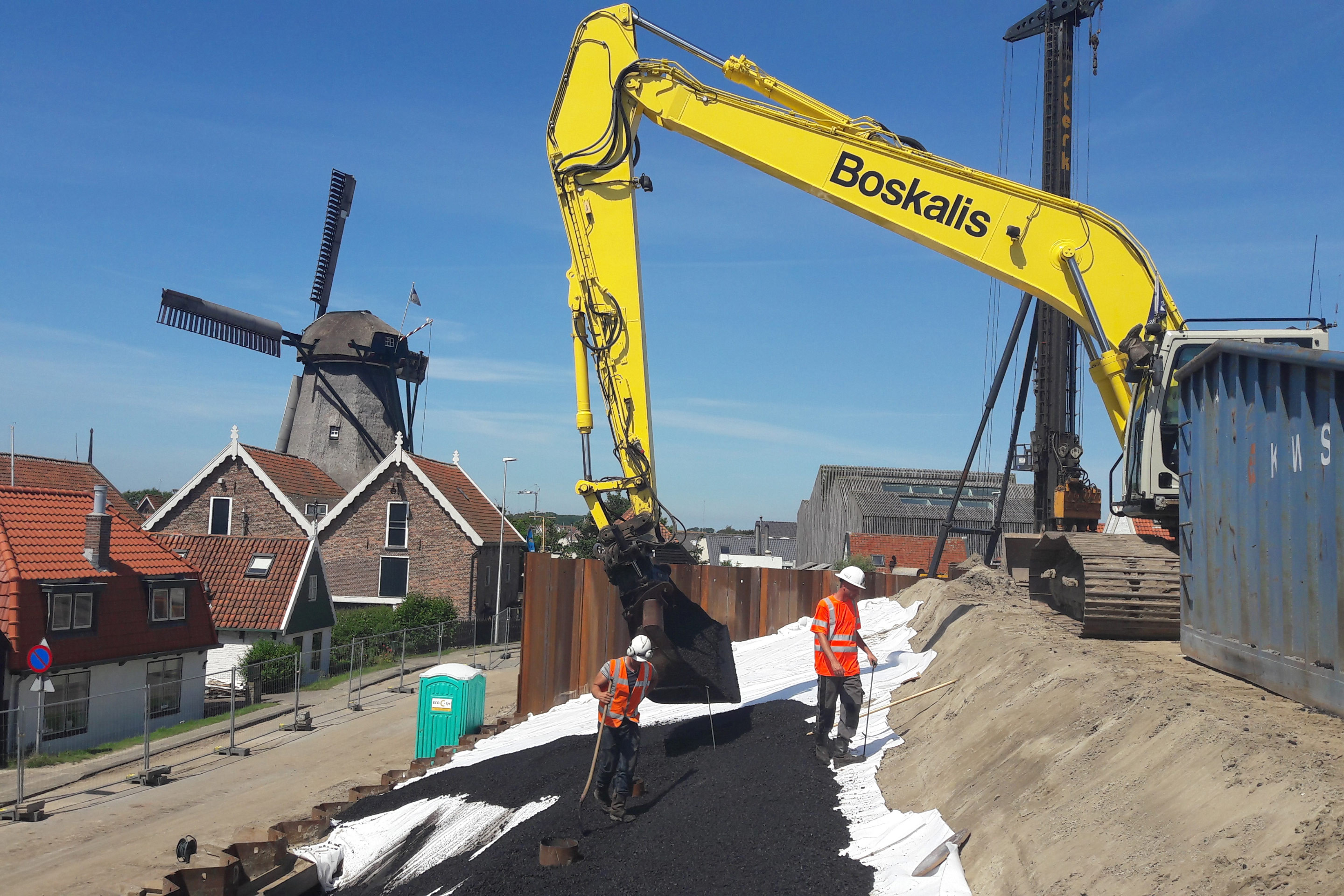
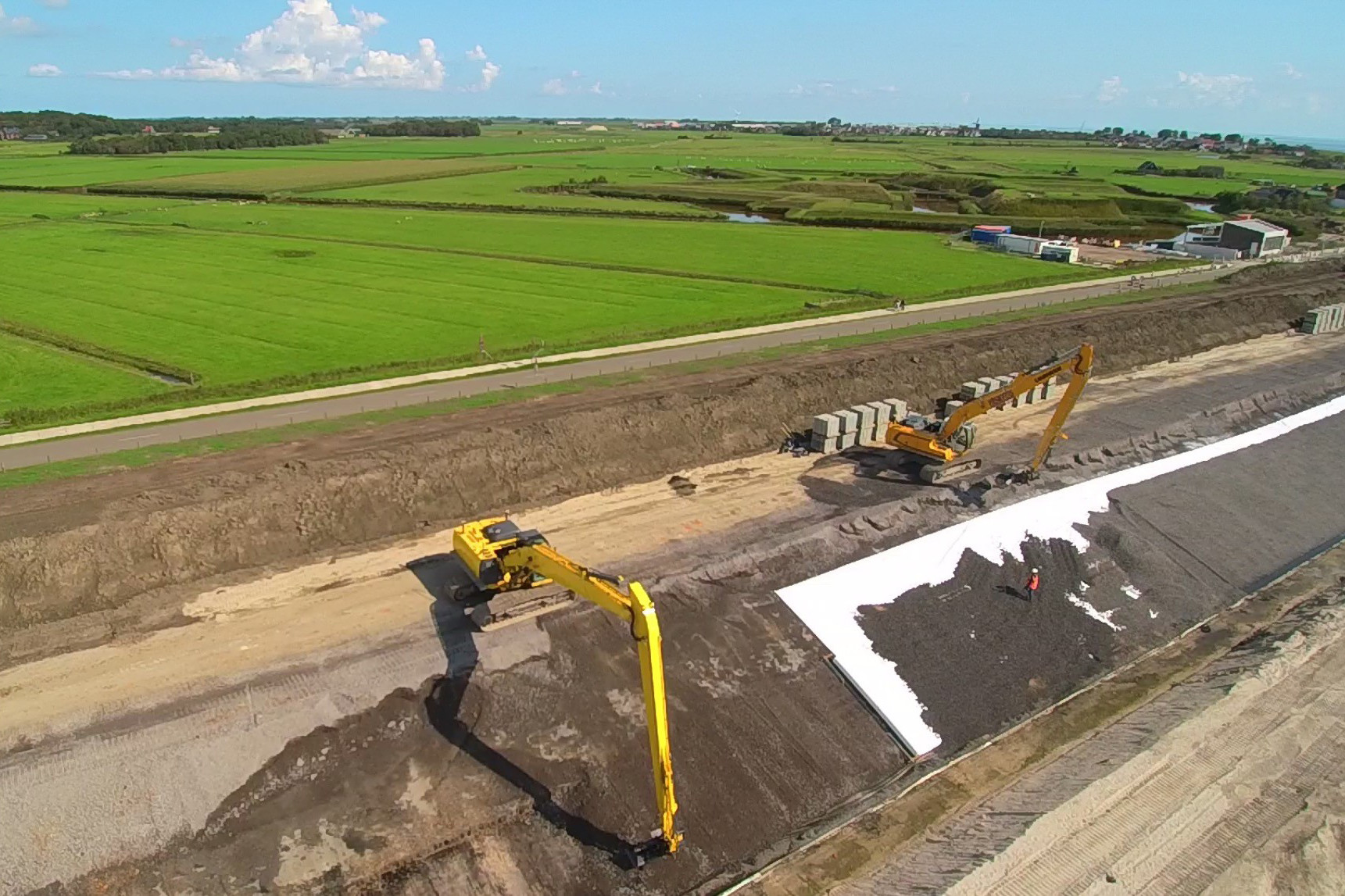
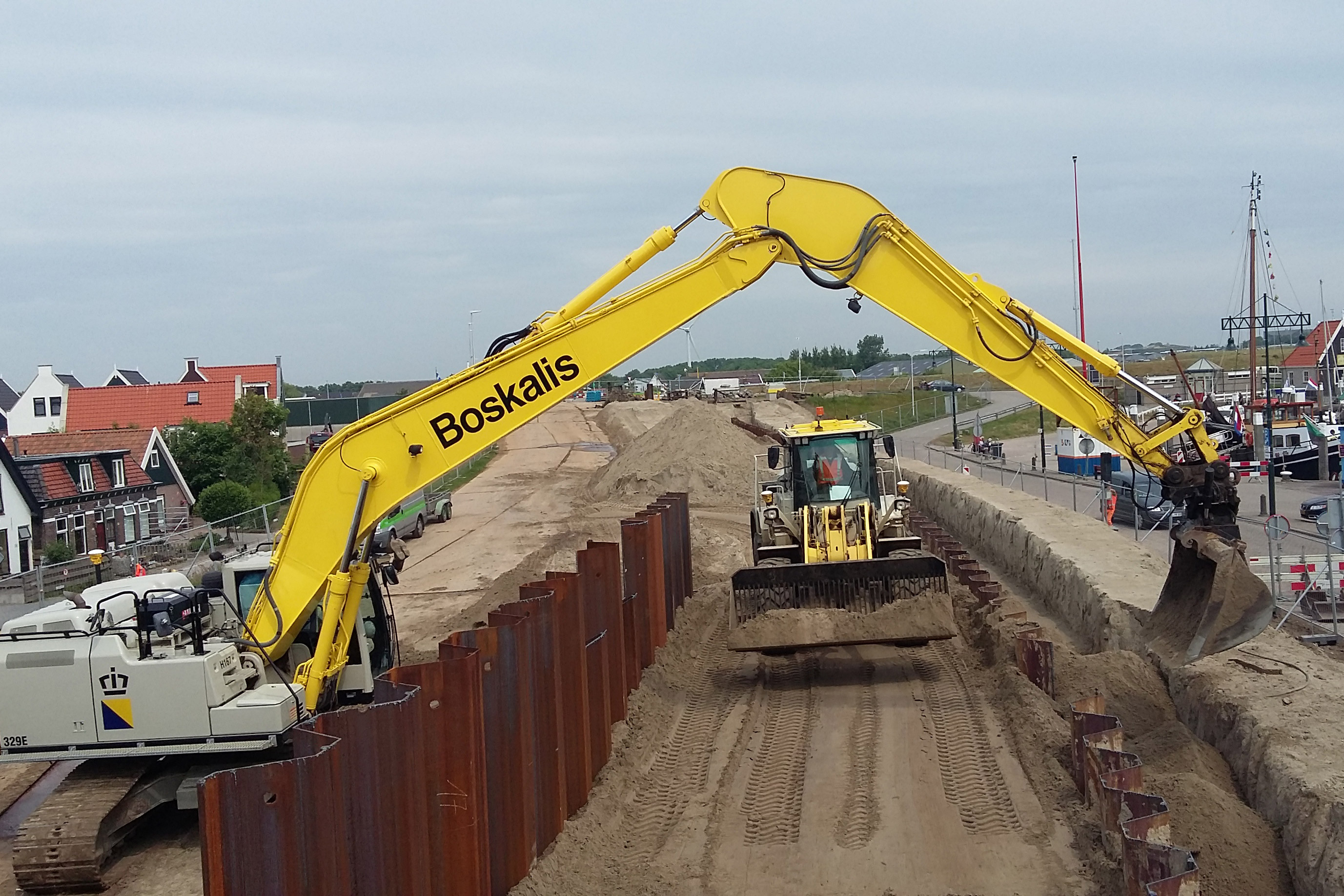
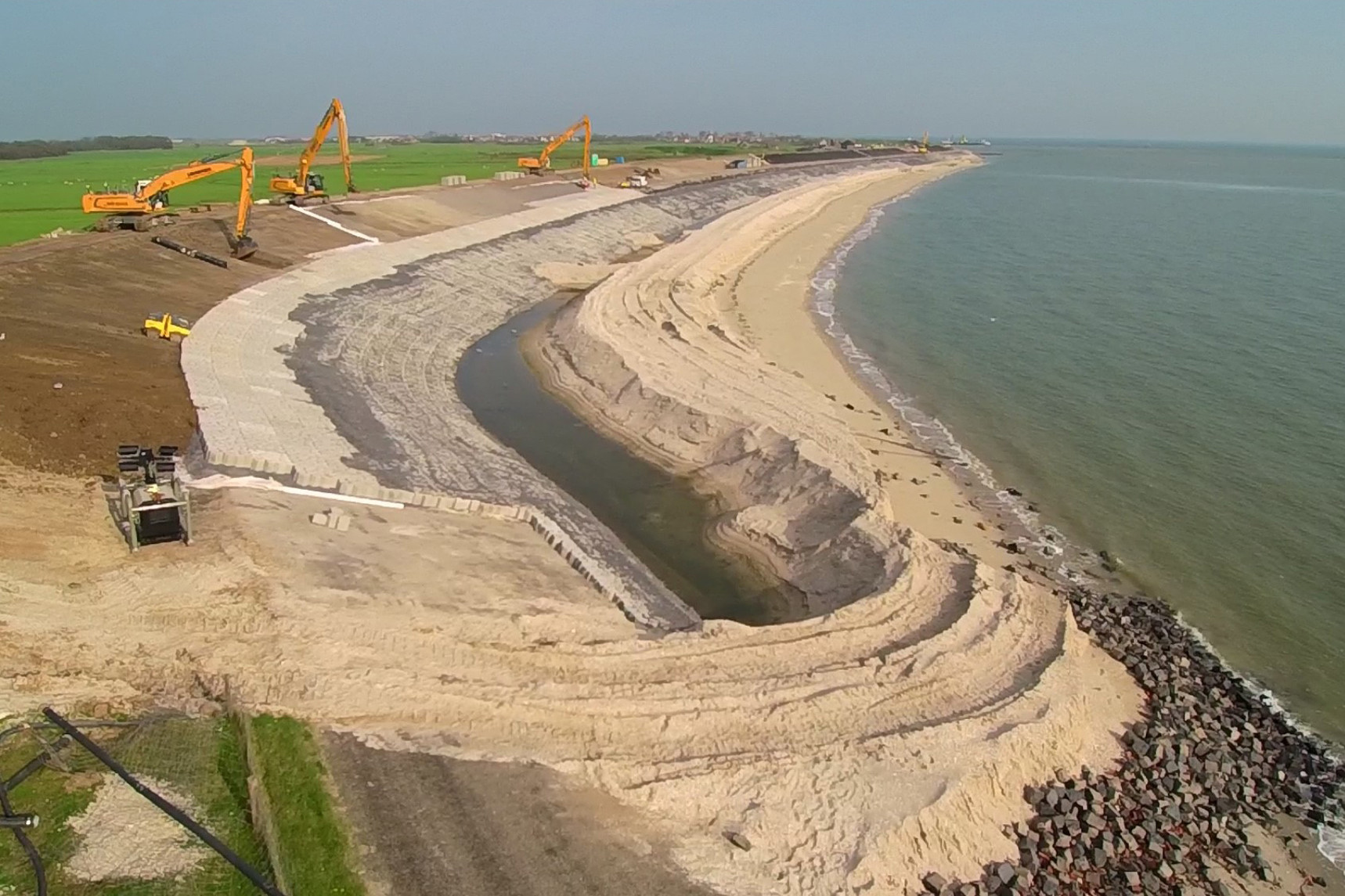
“This is a challenging job in many respects,” says project manager Frank van Vliet. “Our unique approach takes many ecological factors into account. A lot of the schedule is dictated by the habitats of seals and various bird species that have their breeding grounds around the flood defenses. And Texel is also a major tourist attraction.” A major requirement from the client, the Hoogheemraadschap Hollands Noorderkwartier (HHNK) water authority, is the avoidance of disturbance for the island residents and tourists. “One of the reasons we acquired this contract is that we eliminate the burden on the usual ferry service because we manage the delivery of materials to the island ourselves,” says Frank.
A lot of the schedule is dictated by the habitats of seals and various bird species that have their breeding grounds around the flood defenses
“We have built temporary landfalls to take the material close to the section where it is used and, in that way, we make sure we don’t get in the way of the ferry service.”
After an extensive assessment of the Wadden Sea Dike, HHNK decided that 10 sections needed upgrading. The Design & Construct contract saw Boskalis and partner KWS identify a total of 31 different sections - each requiring a specific solution.
One of our solutions for limiting disturbance was to reduce transport movements using a smart, cross-project approach, says Frank. “That involves combining several projects on Texel. We can use the clay and sediment produced from some existing ecological projects to reinforce the dikes. So we are obtaining a large part of the material required directly from the island and that limits the number of transport movements and carbon emissions.”
Another way of reducing disturbance was our decision to avoid piling work, explains Frank. “We are installing approximately two kilometers of sheet piling in the soil-retaining walls. We use dedicated hydraulic equipment to drive the segments into the ground with almost no noise or vibrations.”
Tailored solutions are key on this project, he stresses. “We are looking for the best solutions for each individual location.”
In addition to the project on Texel, Boskalis is also engaged in three other projects for the Dutch national Flood Protection Program managed by Rijkswaterstaat (the Dutch directorate general for public Works and Water) and the Dutch water management authorities. Rijkswaterstaat and the water management authorities have recently conducted extensive studies of dike stability. The research has shown that large sections of the sea dikes do not comply with the statutory requirements which were introduced in 2017 to cope with the effects of sealevel rise and climate change. Working with partners and in addition to the dikes on Texel, Boskalis is upgrading a number of primary defenses in the Netherlands: the Houtrib dike, the Markermeer dikes and Eemshaven-Delfzijl Wadden dikes using innovative and robust approaches to protect the Netherlands from flooding during the next 50 years.
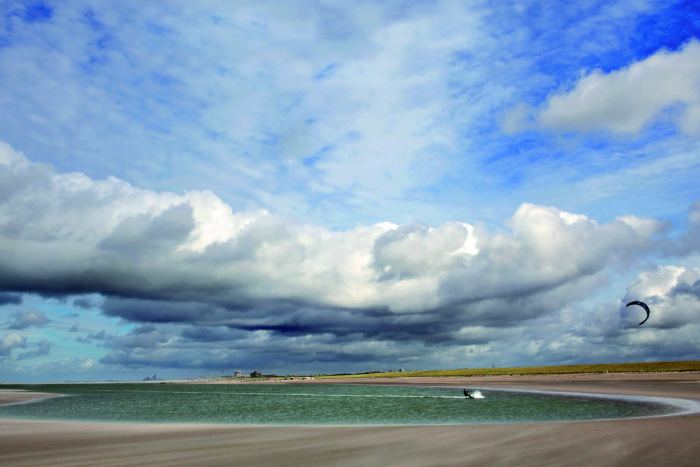
The lagoon that originated as part of the Sand Motor became one of the kitesurf hotspots of the Netherlands
A ‘river bypass’ operation
In another unique inland flood protection project Boskalis and partner Van Hattum en Blankevoort recently finalized the construction of a special flood channel for the River IJssel, which has the impressive ability to facilitate a temporary reduction of 71 centimeters in the level of the river. The Veessen-Wapenveld flood channel can drain up to 45% of the water if it reaches extremely high levels and is designed for a once-in-a-lifetime event.
At 500 - 1,500 meters in width, the channel acts as a ‘bypass’ in extreme high water conditions. The river does not overflow and additionally, it can flow more quickly to the sea. The channel is constructed in such a way that the natural and agricultural functions are maintained, or even reinforced.
When the channel is full, it will facilitate a temporary reduction of 71 centimeters in the water level of the River IJssel, all the way upstream to the cities of Deventer and Zutphen.
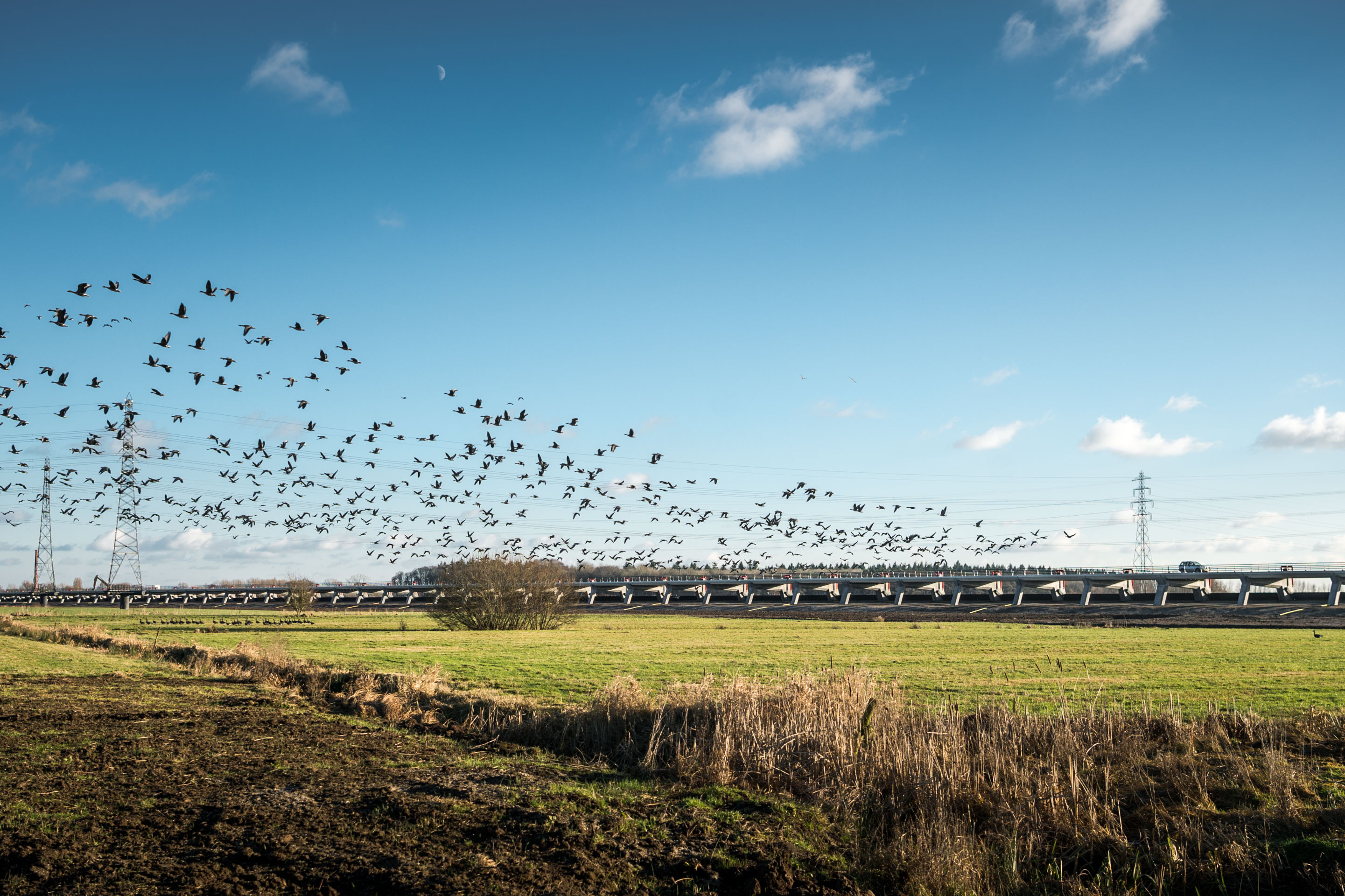
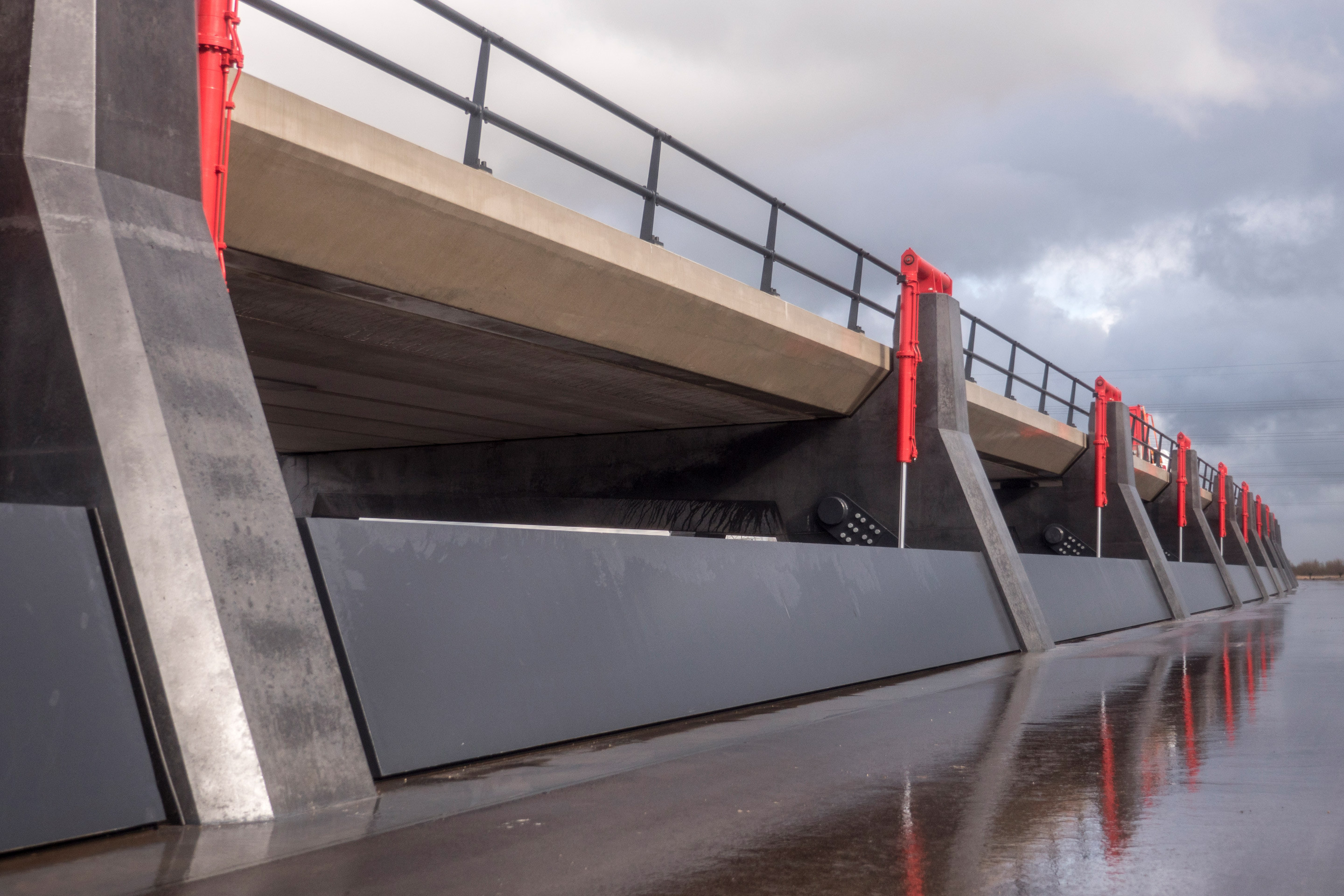
Instead of digging a new channel, two new dikes were built, each of 8 kilometers long. Through this solution, the existing functions in the area could be maintained while significantly improving flood protection in extreme conditions.
The plan for the flood channel consists of much more than just the construction of two dikes. Two pumping stations at the new western and eastern dikes ensure that the water levels remain in order. To the south, part of the Kerk Dike is lowered and a bridge has been built with a moveable inlet underneath. The locks can be opened and closed separately to adjust the amount of water flowing through the channel at peak times. These inlets will only be opened in the case of extreme high water. During normal high water conditions, the channel is protected by new quays.
Nature and recreation are also accounted for. A new landscape zone with space for nature and recreation is laid out: the bicycle path network is expanded, a canoe route is laid out and a hiking path has been planned for the new floodplain. A bird nesting area has also been created amongst other measures.
